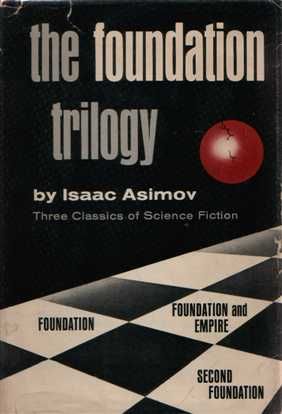If you thought Roland Emmerich (2012) was a bad fit for adapting Isaac Asimov's Foundation Trilogy, now MTV is reporting that the director is planning to shoot it using 3D motion-capture technology. First off, let me ask: is anyone surprised? Emmerich is making a big 180 with his Elizabethan political thriller Anonymous, but his home is spectacle and nothing is more visually spectacular than the 3D mo-capped Avatar. I actually fear an Emmerich film in 3D because it would cause sensory overload. Imagine seeing 2012 in 3D. It would look amazing at first but by the end of the film your eyeballs would be nothing but ash.
Hit the jump to read what Emmerich had to say about 3D as well as what he told Steve about Foundation back in November.
Here's what Emmerich said about 3D and then be in no way surprised by his comments:
Emmerich said he's looking forward to a new challenge at this point in his career. "Probably now all big movies have to be 3-D," he said. "It's not only the effect of 3-D, ['Avatar' has] just shown that if you do a movie in 3-D, you can ask for more money and that's the trick. I think now everybody who does bigger movies has to shoot them in 3-D. I think there's no way around it. I was on the set of 'Avatar' and I saw how it worked and I really thought, 'That's the ultimate way of making movies.'"
Now keep in mind that Asimov didn't write his books around set pieces or snappy one-liners. Here's how Wikipedia describes the Foundation series:
The premise of the series is that mathematician Hari Seldon spent his life developing a branch of mathematics known as psychohistory, a concept of mathematical sociology (analogous to mathematical physics) devised by Asimov and his editor John W. Campbell. Using the law of mass action, it can predict the future, but only on a large scale; it is error-prone on a small scale. It works on the principle that the behaviour of a mass of people is predictable if the quantity of this mass is very large (equal to the population of the galaxy, which has a population of quadrillions of humans, inhabiting millions of star systems). The larger the number, the more predictable is the future.
The focus of the trilogy is on the First Foundation, that of the planet Terminus, in the extreme periphery of the galaxy. The people living there are working on an all-encompassing Encyclopedia, and are unaware of Seldon's real intentions (for if they were, the variables would become too uncontrolled). The Encyclopedia serves to preserve knowledge of the physical sciences after the collapse.
If you had even the slightest hint of hoping that the film adaptation would respect the ideas and scientific exploration of Asimov's novels, I think you've probably discarded that hope at this point.
Finally, here's what Emmerich had to say about Foundation when Steve interviewed him back in November:



